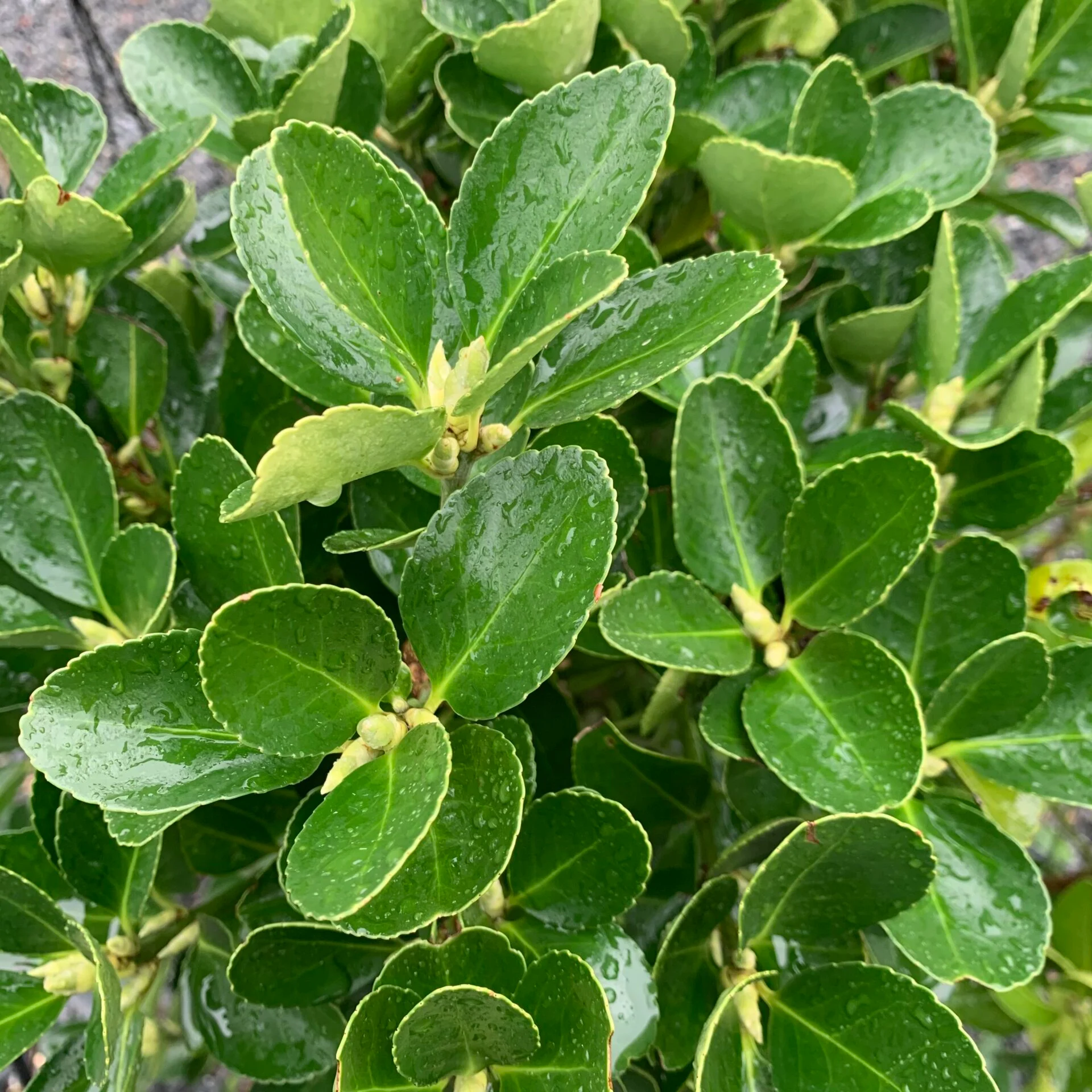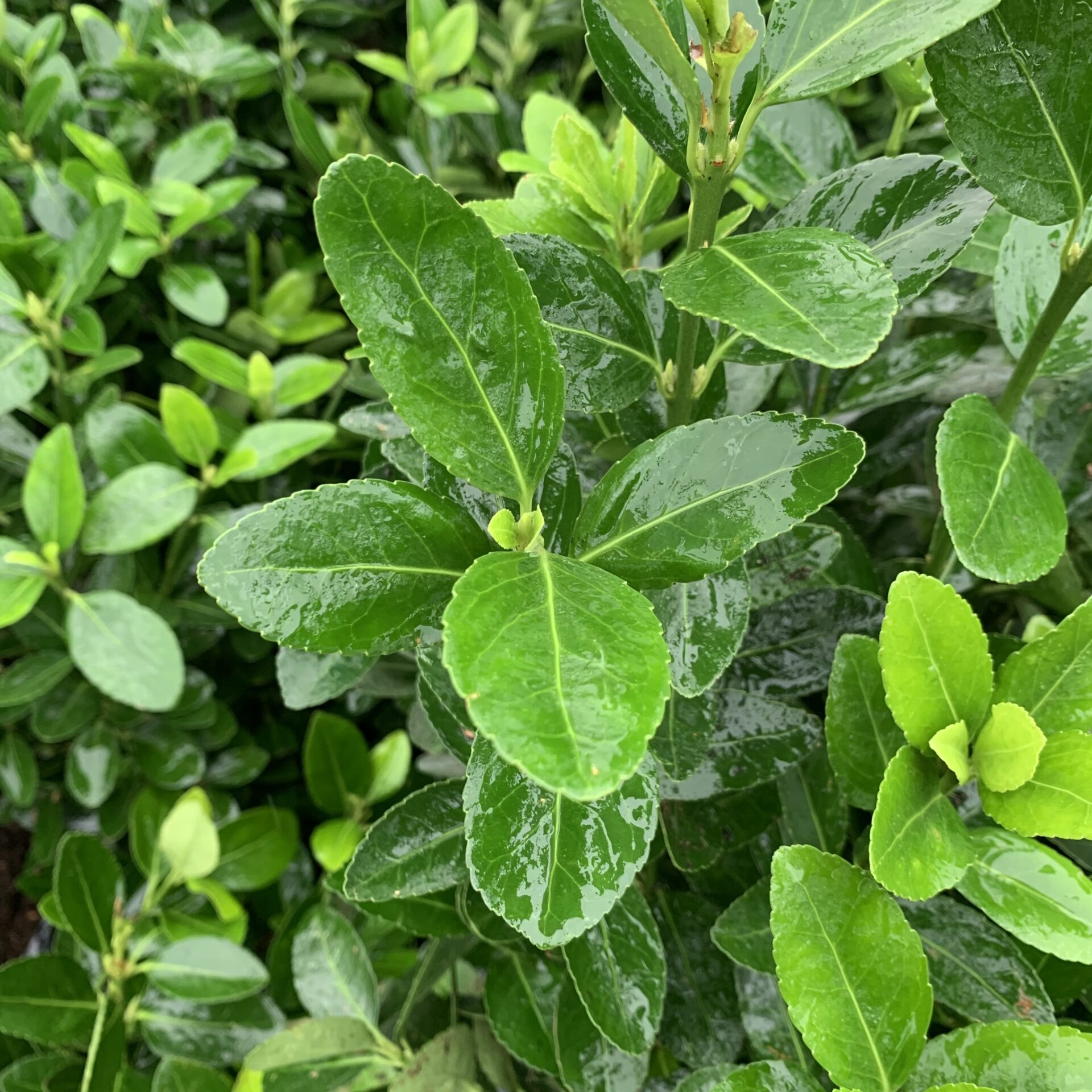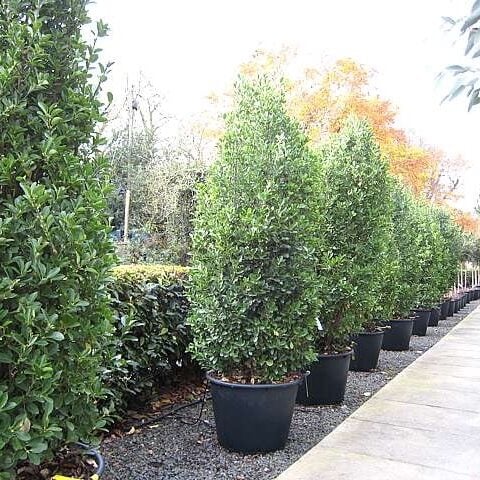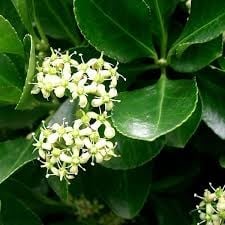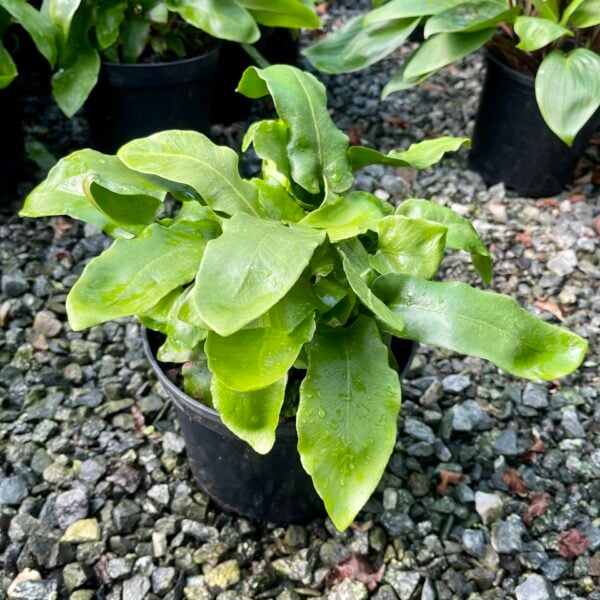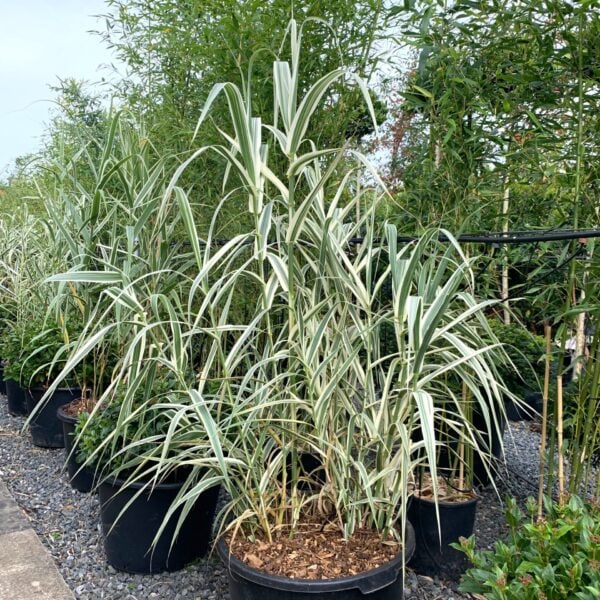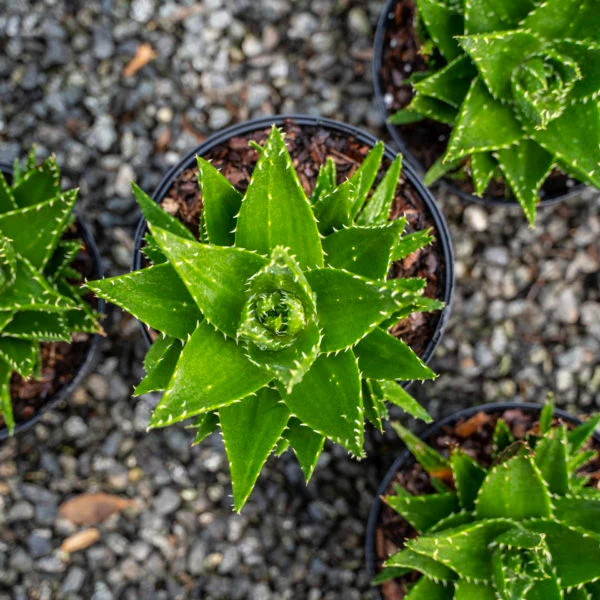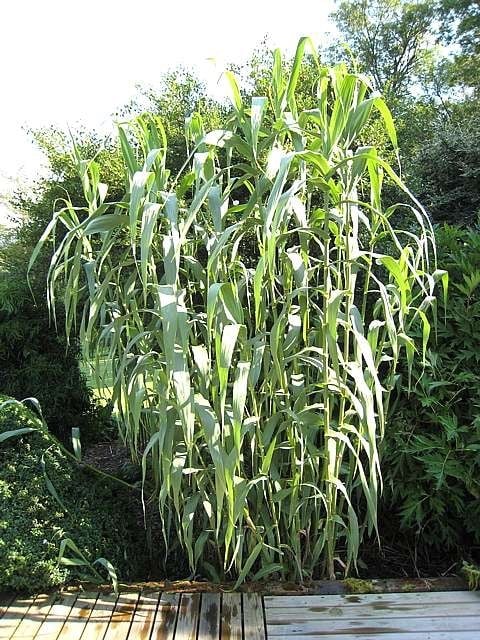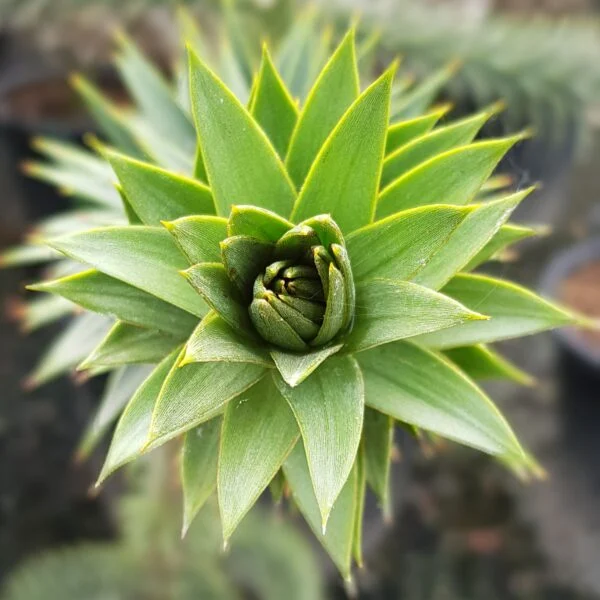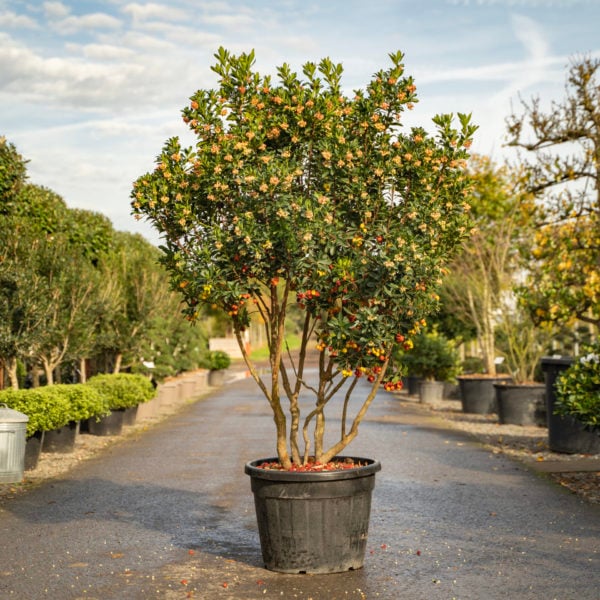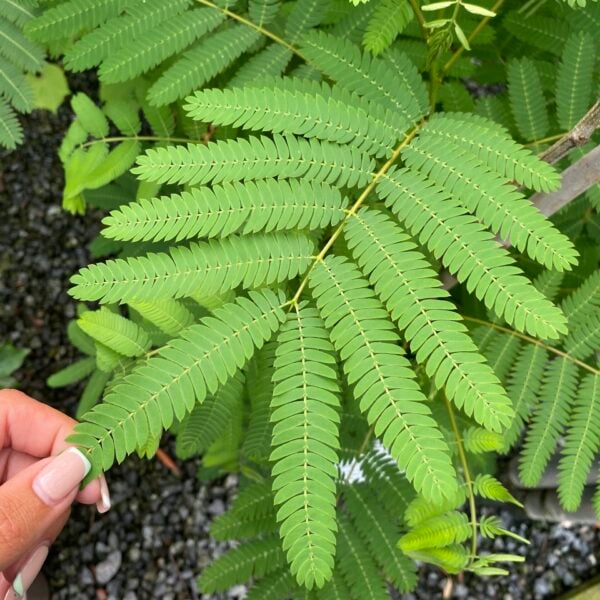Euonymus japonicus (Japanese Spindle)
Glossy, robust and reliable. One of the best salt resistant shrubs for hedging and topiary by the sea. The first plant to come into leaf in the spring. 10ft after 15 years. Please contact us for stock availability and sizes.

Hardiness level Amber
Fantastically salt and wind tolerant which is why you so often see it as a hedge in seaside gardens. However, it has other uses. It doesn't have to live by the sea, it'll grow anywhere and it doesn't have to be a hedge. Blobs, topiary, shapely little tree, the possibilities are endless. One of its most endearing habits is being one of the first harbingers of spring. The fresh green young growth often appears at the end of February after most winters by the seaside. Inland, there's always the risk that the new growth might get damaged by late frosts but no matter, it'll quickly re-grow. Clip it into anything you like but as a shapely little tree by the seaside it's outstanding. The flowers are little yellow bobbly things and nothing to get excited about. Any old soil, sun or shade but as with most plants, the leaves will be darker green in shade. Could reach 6ft in 6 years with an eventual height of about 15ft.
Severe frost (-4°c or below) will give the leaves a glazed, pendulous look. It can look terminal but it's not. They recover wonderfully well as soon as the temperature rises.
Propagated by cuttings.
Euonymus occasionally succumbs to powdery mildew which is an endemic air-born fungus. Easy to identify - it looks exactly like its name. Powdery and mildewy. It's easy to treat and we suggest the following action is taken as soon as you notice the white powdery residue on the leaves (usually worst in the inner part of the plant). Give the plant a good clip, removing as much of the affected parts as possible without cutting too hard into the central branch structure. Clean up thoroughly and remove all rubbish from the area. Spray with a general purpose ready to use systemic fungicide - one that contains myclobutanil. Be sure to follow the instructions carefully and repeat treatments as necessary. This protects and cures and so can be used regularly if needed. When clipping several plants with the same tool, have a bucket containing a 5% bleach solution and swish your blades around for 30 seconds between plants to sterilise them. This will help avoid the chance of cross contamination of disease.
Additional Information |
|
|---|---|
| Soil Type | |
| Light | |
| Plant Type | |
| Continent of Origin | |
| Specialist Plants | |
| Situation | Coastal, Exposed (To wind and sun), Mild City Gardens, Plants for Pots, Seaside, Sheltered Garden |
| Flower Colour | |
| Hardiness | |





